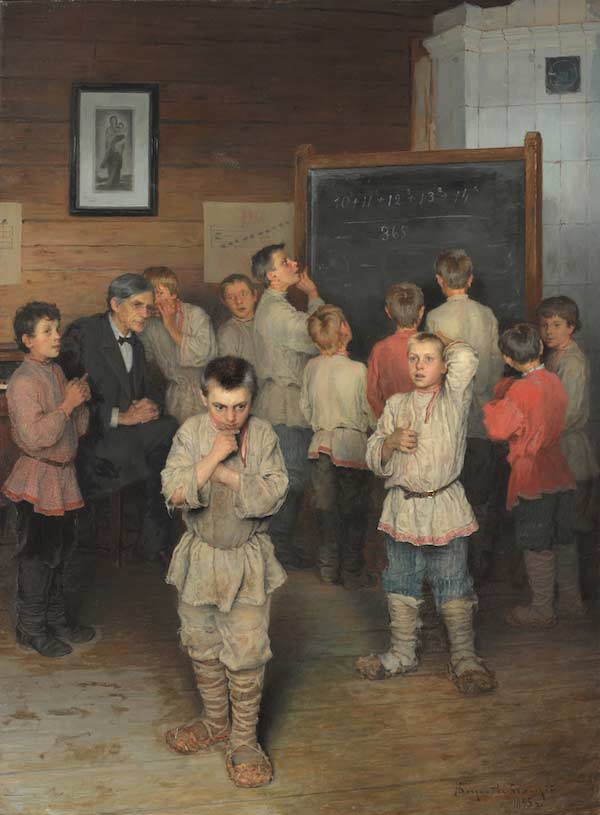Fixing Education
Today, we are going to fix the American education system. I bet you thought the thorny problem was beyond the capacity of a simple 850-word Guncrank column. And there, you would be wrong.
My qualifications for tackling this Gordian chore are that I have gone to school a lot. I don’t have a degree in education, nor have I ever been a professional teacher. My mom taught ninth-grade math for decades, and I once spent two days as her substitute. That was enough to convince me that I needed to find a different way to make a living. Spending my workday among today’s crop of miniature reprobates was frankly horrifying.
Everybody knows the system is broken. Just look at the product the American education system produces. Speaking in sweeping generalizations, typical kids today can seriously rock them some TikTok, but I’m not really getting an Einstein vibe.
Utah spends $7,951 per year per student educating their kids. New York shells out $24,881 per annum for the same service. Everybody else falls somewhere between those two extremes. For that kind of coin, I would expect well-paid, professionally-satisfied educators, a safe learning environment, and kids who were launching homebuilt spaceships to Mars recreationally on the weekends. Given the astronomical amount of cash we throw into this system, why then, is that not the case? I would assert that John Mullins had the answer.
John Mullins taught me math in high school. He was also a World War II veteran. Mr. Mullins humped a Browning Automatic Rifle all the way across Europe before coming home to become a professional school teacher. He once related an anecdote about shooting at and missing a German officer on horseback with his full-auto BAR to illustrate something about mathematical probability. I have no recollection of the math dictum he was trying to teach us, but I will never forget that story.
Mr. Mullins had the task of teaching a bunch of snot-nosed kids growing up in the Mississippi Delta the rudiments of algebra, geometry and senior-level math. In support of that holy mission, he had a big wooden compass, a comparably scaled wooden protractor and an infinite supply of yellow chalk. That was it. There were no computer projectors, complicated formalized lesson plans or math labs. We took exactly zero standardized tests to gauge our progress. And yet, with those three simple tools, that man taught me enough math to successfully get through mechanical engineering school, Army flight school, and eventually medical school. Why was it he could actually do that with such rudimentary resources, might you ask? It was because his boss just said, “John, teach those kids math,” and then left him alone.
The problem is certainly not teachers. Not unlike cops, with precious few exceptions, professional educators all gravitate toward that job as a calling. They sure don’t do it for the money. I would posit that the problem is actually the 50 guys in suits standing between the teacher in the classroom and the Governor. I would assert that this massive bureaucracy costs a fortune and adds relatively little value to the actual classroom experience.
We homeschooled our kids. However, I see school-age kids and parents at work all the time. Nowadays, it seems that students spend about half their time actually learning stuff and the rest of their time taking standardized tests. I’m told that teachers are subsequently rated based upon the performance of the little monsters in their charge.
All educators, like all health care providers, seem to have a strong maternal streak. Guys or girls, it doesn’t matter. We all want to nurture the vulnerable. I have found that the absolute worst thing you can do to a nurturing personality is to put them in a stressful environment wherein they are held accountable for things they may not necessarily be able to control.
Sometimes, a teacher gets a good crop, and they do great. Other times, they happen to draw a classroom full of aspiring penitentiary inmates, and those numbers don’t look so awesome. Either way, the teacher in the classroom stands or falls based upon how well her charges happen to perform on standardized tests drafted by people who, by definition, do not spend every day in a classroom.
Each year, during the last two weeks of the summer break, I will see a handful of teachers in my medical clinic who are absolutely verklempt over the pending return of the student body. The impetus behind their discombobulation is not the kids. It is simply the rigid, regimented, hyper-intense, overly administered nature of the modern educational system.
So, here’s a radical thought from a guy who has absolutely no credibility at all: The current system clearly doesn’t work. Why don’t we try the John Mullins model? Just give teachers the resources they need and then get out of their way. Yeah, you’ll have a few who crash and burn without intensive supervision. However, I’d be willing to bet that, once they have tasted the intoxicating freedom to actually educate, they’ll do great — just like Mr. Mullins.






